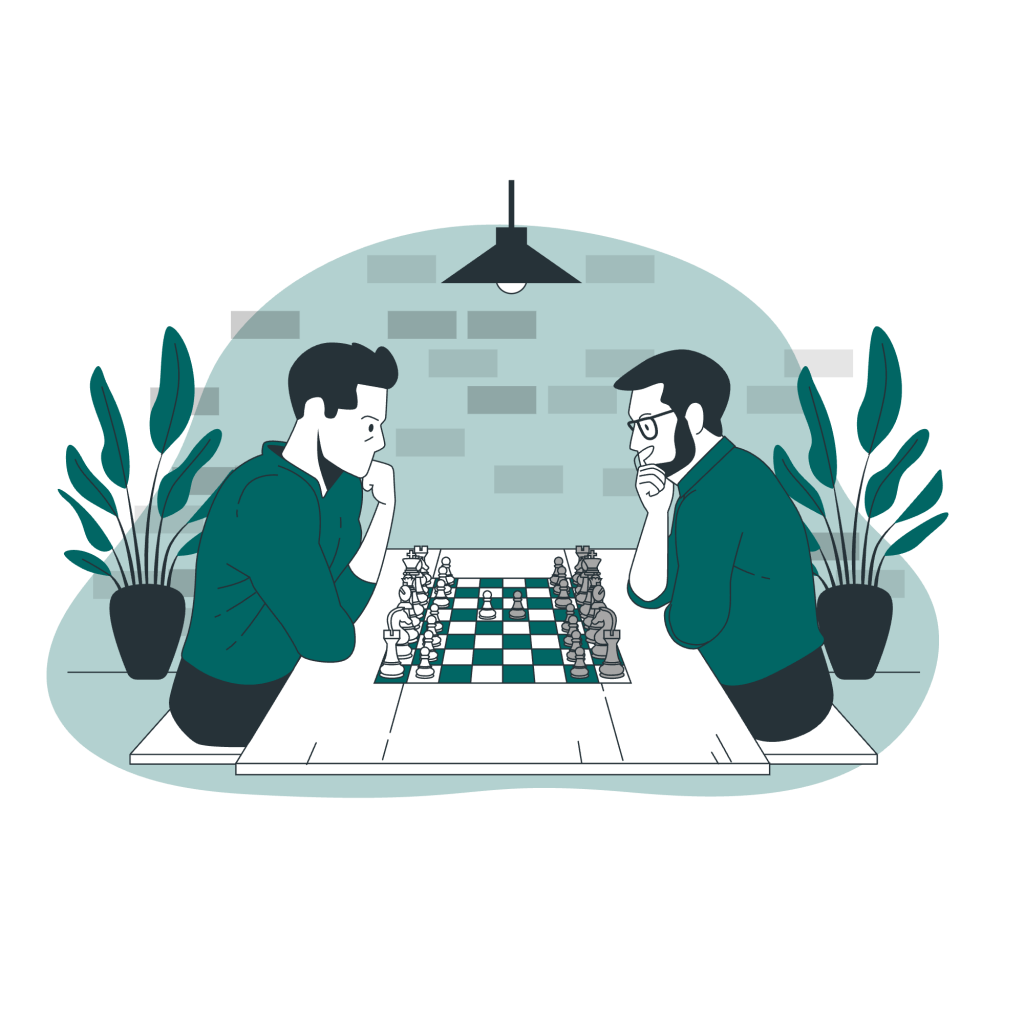This approach strongly emphasizes establishing an emotional bond between users and the products or services they engage with. In this article, we will explore the profound influence of inspirational design, its profound impact on user experiences, and how businesses can harness its potential to leave a lasting impression.
Emotional design centers around creating products and experiences that elicit robust emotional responses from users. It recognizes that users' perceptions and interactions extend far beyond the mere functionality of a product. By addressing users' emotional needs, businesses can forge stronger connections and cultivate positive experiences that resonate deeply.
Incorporating emotional design principles involves understanding and catering to users' desires, aspirations, and values. It goes beyond just delivering a functional solution and taps into the realm of human emotions. By designing experiences that inspire and captivate users on an emotional level, businesses can forge a profound connection that extends beyond superficial appearances.

The Three Levels of Emotional Design
Design encompasses three distinct levels: the functional level, the usability level, and the emotional level. Each level plays a crucial role in creating a holistic user experience.Functional Level
At the functional level, the design addresses a product or service's fundamental usability and functionality. It guarantees that users can accomplish their objectives effectively and without meeting pointless obstacles. However, functional design alone may not leave a lasting impression or create a truly memorable experience.Usability Level
Moving up to the usability level, the focus shifts towards making the interaction with the product intuitive and easy to understand. This involves removing obstacles, providing clear guidance, and optimizing the user interface. While usability is essential for a smooth experience, it falls short of forging deep emotional connections with users.Emotional Level
The emotional level is where design transcends utility and usability to evoke positive emotional responses. Here, emotional design takes center stage, considering aesthetics, storytelling, and the overall sensory experience. Designers can profoundly impact users by crafting visually appealing interfaces, weaving engaging narratives, and leveraging the power of sensory elements. At this level, memorable experiences are formed, leaving users with a lasting emotional connection to the product or service.Businesses must comprehend their target audience's emotional requirements and goals to implement the emotional design successfully. By empathizing with users, incorporating meaningful aesthetics, and crafting compelling narratives, businesses can elevate their design to resonate deeply with users, foster brand loyalty, and create unforgettable experiences.
The Importance of Emotional Design

Emotional design surpasses surface-level aesthetics and forges a profound bond between users and products or services. It influences users' perceptions, shapes brand identity, and fosters long-term loyalty. Businesses may leave a lasting impression by evoking positive emotions in their target market.
Color and Visual Elements
Colors have a unique capacity to arouse particular emotions. Cool colors like blue and green inspire a sense of peacefulness and trust, while warm colors like red and orange can arouse energy and enthusiasm. Visual elements like shapes, lines, and textures further enhance the emotional impact of design, adding depth and meaning.Typography and Font Choices
In order to communicate a brand's tone and personality, typography is crucial. Different font styles have the power to evoke distinct emotions. Bold and robust fonts may communicate confidence and strength, while elegant and flowing fonts can evoke a sense of sophistication. The emotional connection with users can be amplified by carefully choosing a font, improving the user experience as a whole.Imagery and Iconography
Images and icons possess a direct channel to users' emotions. Businesses can tap into users' aspirations, desires, and values by incorporating relatable visuals. Thoughtful imagery and iconography create visual narratives that resonate deeply with users, stirring their emotions and establishing a powerful connection.By leveraging these design elements, businesses can create captivating experiences that go beyond functionality and leave a lasting impact on users. Emotional design acts as a bridge, enabling businesses to connect with their audience on a deeper emotional level, building trust, loyalty, and a strong sense of brand affinity.
Creating Empathy and Connection
Storytelling through Design
Storytelling holds immense power in evoking emotions. Businesses can establish empathy and connection with users by incorporating narratives into the design. Through storytelling, users can relate to the brand's values and experiences, creating a more personal and engaging user experience. Businesses may have a significant emotional effect by developing fascinating narratives that connect with their target audience.Personas and User-Centric Design
Design professionals can better understand their target audience by creating user personas. Businesses may create experiences that speak to the emotional needs of their users by designing with specific user personas in mind. The user-centric design ensures that products or services align with users' aspirations and desires, fostering a stronger emotional connection. By empathizing with their audience and designing with their specific needs in focus, businesses can create experiences that resonate personally.Interactive and Engaging Experiences
Users are encouraged to take an active role in interactive and captivating experiences. Businesses can infuse a sense of delight and enjoyment by incorporating interactive elements such as animations, micro-interactions, QR Codes, or gamification. These interactions leave a lasting impact, motivate customers to utilize the product or service again, and heighten their emotional attachment to it. Businesses can forge a deeper bond with their audience by providing memorable and interactive moments.By embracing these strategies, businesses can create empathetic and emotionally resonant design experiences. Through storytelling, user-centric design, and interactive elements, businesses can connect with users profoundly, establishing a lasting emotional bond and fostering loyalty
Aligning Emotional Design with Brand Identity

Emotional design must align with a brand's identity and values. It should reflect the brand's personality and evoke the intended emotions. A brand experience that is consistent across all touchpoints strengthens the emotional connection. By ensuring that emotional design aligns with the brand's essence, businesses can strengthen their brand image and deepen the emotional bond with users
User Feedback and Surveys
Collecting user feedback through surveys and interviews provides valuable insights into users' emotional responses. It enables companies to evaluate the success of their emotional design approaches and make wise adjustments. By actively seeking feedback, businesses can better understand how users perceive and connect with their brand emotionally.User Behavior Analysis
Analyzing user behavior, such as time spent on specific pages or interactions with certain elements, can indicate the emotional impact of design choices. Heatmaps and click-through rates offer quantitative data to evaluate user engagement and emotional resonance. Businesses can uncover patterns and preferences that inform future emotional design decisions by studying user behavior.Conversion Rates and Business Metrics
Monitoring conversion rates and other business metrics, such as repeat purchases or customer retention, can indicate the success of emotional design strategies. Positive emotional outcomes frequently result in greater client loyalty and better commercial results. Businesses may analyze the effect of emotional design on their bottom line and make data-driven decisions to improve emotional engagement by monitoring these KPIs.So, aligning emotional design with a brand's identity and values is crucial for creating a cohesive brand experience. By measuring the impact of emotional design through user feedback, behavior analysis, and business metrics, businesses can continuously improve their emotional design strategies and build stronger emotional connections with their audience.
Case Studies: Successful Implementation of Emotional Design
Apple: The Power of Simplicity
Apple has successfully implemented emotional design principles by emphasizing simplicity and elegance. Through minimalist and intuitive interfaces, Apple products evoke a sense of sophistication and exclusivity. This approach resonates with users on an emotional level, fostering a strong connection between the brand and its audience. By prioritizing user experience and crafting designs that are visually pleasing and easy to use, Apple has created a loyal customer base that appreciates the emotional appeal of its products.Airbnb: Building Trust and Belonging
Airbnb's design strategy revolves around building trust and a sense of belonging. By incorporating personalized recommendations, user reviews, and immersive visuals, Airbnb establishes an emotional connection with its users. The platform creates a sense of trust by providing transparent information and facilitating user-generated content. Through thoughtful design choices, Airbnb makes users feel confident in their choices and fosters a sense of belonging in any location they choose to stay. This emotional connection contributes to Airbnb's success as a trusted marketplace for accommodations.Nike: Inspiring Personal Achievement
Nike's emotional design strategy centers around inspiring personal achievement. Through captivating storytelling and showcasing the stories of athletes, Nike motivates its audience to push their boundaries and pursue their goals. The brand emphasizes empowerment, aspiration, and determination through its design choices. By creating emotional connections with its users, Nike promotes its products and symbolizes inspiration and personal growth. Nike's emotional design approach has been instrumental in building a loyal community of athletes and enthusiasts who resonate with the brand's values and mission.These case studies exemplify the successful implementation of emotional design. By understanding their target audience, aligning design choices with brand values, and evoking specific emotions, these brands have created memorable experiences and established solid emotional connections with their users. Emotional design has played a crucial role in shaping their brand identity, fostering loyalty, and driving their success in the market.
Implementing Emotional Design Strategies

1. Conducting User Research
Thorough user research plays a vital role in implementing emotional design strategies. Businesses may design emotionally resonant experiences by understanding the emotional demands, preferences, and pain points of the target audience. User research helps uncover insights into users' motivations, allowing designers to craft designs that deeply connect with their emotions.2. Collaborative Design Processes
Emotional design should be integrated from the early stages of the design process. By incorporating multidisciplinary teams and fostering collaboration among designers, developers, marketers, and other stakeholders, businesses can align the product's emotional goals and create a cohesive user experience. Each team member adds a distinct set of skills and viewpoints, which helps to produce user-friendly designs that are emotionally compelling.3. Iterative Testing and Refinement
Continuously testing and refining the design based on user feedback is essential for successful emotional design implementation. Iterative processes allow businesses to adapt and improve emotional design elements, addressing any potential shortcomings and enhancing the overall user experience. By actively seeking and incorporating user feedback, businesses can fine-tune their designs, increasing emotional engagement and creating experiences that truly resonate with their audience.Businesses can effectively implement emotional design strategies by incorporating user research, fostering collaboration, and adopting iterative testing processes. These approaches ensure that design choices are grounded in user insights, aligned with emotional goals, and continually refined to create meaningful and impactful user experiences.
Conclusion
Beyond aesthetics, emotional design is crucial in creating user experiences that people will remember. Businesses can cultivate solid and meaningful emotional connections with their audience by deeply understanding users' emotional needs and leveraging design elements. Emotional design goes beyond superficial appearances and taps into the core of human emotions, allowing businesses to create experiences that resonate profoundly.By aligning emotional design with brand identity, businesses can establish a consistent and authentic emotional tone throughout their products or services. When the emotional design is in harmony with the brand's values and personality, it reinforces the brand identity and strengthens the emotional bond with users. The whole user experience is improved by the impression of coherence and familiarity created by this alignment.
Businesses gain an advantage over their rivals in the crowded market by investing in emotive design methods. When users have positive emotional experiences, they are more likely to remember the brand and develop a sense of loyalty. Emotional connections promote client loyalty and repeat business by encouraging consumer trust, satisfaction, and advocacy.
To succeed in emotional design, businesses must understand their target audience's emotional landscape. Conducting thorough user research allows for a deeper comprehension of users' desires, motivations, and pain points. By empathizing with users and integrating emotional insights into the design process, businesses can create tailored experiences that genuinely resonate with their audience.
Leveraging design elements such as color, typography, imagery, and storytelling further enhances the emotional impact of design. Thoughtfully chosen colors, fonts, and visuals can evoke specific emotions, while storytelling weaves narratives that connect users with the brand's values and experiences.
In conclusion, emotional design transcends aesthetics and enables businesses to create remarkable user experiences. By understanding users' emotional needs, aligning with brand identity, and investing in emotional design strategies, businesses can forge solid emotional connections that set them apart from the competition. By fostering these connections, businesses can cultivate long-term customer loyalty, advocacy, and business success
Author: Elen Mesropyan
Elen is an experienced web content and report writer at LinkyJuice.
She has a passion for creating engaging and informative articles. She mainly specializes in SEO-optimized content and IT-related articles. With a background in marketing, she always writes copy that leaves a lasting impact on readers.


